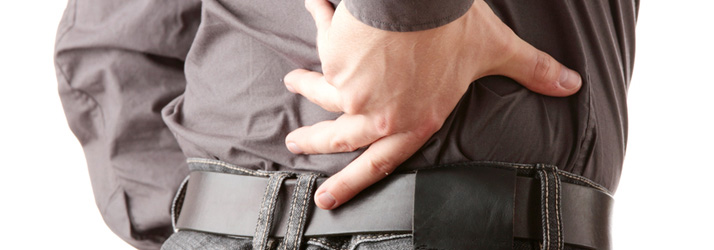Posture in Shelburne

Posture problems have become one of the most common concerns we see in Shelburne.
Historically, we may have thought of posture as merely an aesthetic problem: it isn’t attractive. Research now shows it is much more serious than just not looking good. Studies show that it can lead to degenerative changes and can impact everything from back and neck pain to headaches, digestive problems, breathing problems, sleep problems, trouble walking and even mental health concerns.
Posture is the window to the spine.
Your spine is your lifeline. It houses the spinal cord which carries the vital messages from your brain to your body and back. Poor posture can affect the nervous system which controls every cell in your body. A posture problem may not be just a spinal problem; it could be a health problem.
Postural decline is on the surge, and it is hurting children’s physical and mental health in a big way. The next generation is in trouble. They are growing up with too much screen time causing weak spinal extensor muscles. More than 50% of school aged children present with posture problems, and 67% of students are suffering from Tech Neck posture. This is not just a bad habit; it can affect pediatric development and even be related to ADHD.
Poor posture involves muscles that may be too weak or too tight. If you just try to force yourself to sit up straight, it could be creating more problems by increasing spasms and weaknesses leading to more spinal problems, not to mention being exhausting!
As much as we may wish there was a pill to correct poor posture, a natural approach is important because we need to address the cause of it in order to understand the solution that will create ease, leading to strength and suppleness.
Why a Detailed History and Exam Is Important For Evaluating Your Posture Problems
Some people remember the day their posture started to tank, but most just noticed it gradually over time. Your past has brought you to where you are today so we need to be detectives to uncover how car accidents, sports injuries, slips and falls that have jarred your spine, coupled with bad habits, repetitive motions, and use of screens and devices have accumulated to understand not only how it all got started but also what keeps recreating it. We need to find out what is getting in the way of your body correcting the problem itself. We often find poor posture runs in families so we will want to identify any hereditary or learned patterns that will need to be addressed.
Once we understand what your unique posture challenges are and how they developed, we use SPACE certified technology to assess your spinal function.
To determine imbalances in the postural muscles along the spine we use surface electromyography (sEMG) and digital range of motion analysis. We will need to identify where there are unique tension and weakness patterns and what is causing them. We use a digital posture analysis to evaluate structural imbalances as well as proprioception (how well your brain is tracking where your body is in space): if the brain has a distorted self-image, then how can it correct imbalances? Garbage in garbage out!
The area of our brain that controls our posture, the posture-medullary reticular formation (PMRF) is located in the pons medulla area which is in the brain stem which extends down into the upper neck. We will evaluate brain function to see if both sides of the brain are working in sync to run the body symmetrically.
We may also run other scans that will tell us if your spinal problems are indicators of bigger health problems and whether overloading stress in your life is a contributing factor.

Why We Recommend X-rays to Evaluate Your Posture Problems
When you think of spinal arthritis and degeneration, you may think of it as something that affects older folks, but new research shows us 9% of 10 year olds already have signs of degenerative changes!
Another study showed poor posture may also be related to a new x-ray finding showing bony horn-like outgrowths on the back of the skull! HORN XAYS
Xrays are valuable tools to tell how long the problem has been there, whether we have caught it in time and how long it will take to correct.
Many are surprised to see underlying scoliosis and loss of proper alignment because they thought there would have been constant pain for that to be there. Just like a cavity, by the time you are feeling it, it may be a sign of a much bigger problem.
It is also important to know whether your postural problems are caused by misshaped vertebrae, from old injuries, or congenital malformations so we then know the best approach to help you.
Once we see a baseline, we will be able to monitor progress over time to be sure we are moving in the right direction or to course correct as needed.

How Chiropractic Can Help Posture Problems
If you are worried that you are getting a hump in your back like you may have seen in your grandparents, the best tool for addressing this may be chiropractic. If a vertebra in the spine is out of alignment, the body will compensate causing the spine to round forward. The spine should have three main curves in it, forward at neck and waist and backward in the middle of the spine, but not too much or too little. Specific chiropractic adjustments for the neck, thoracic spine and pelvis can reconcile this, so with any posture problem, this is where we start.
We often find patterns of tension in the spinal cord which act as a blueprint that the bony structure of the spine follows. We use a light touch approach to help the brain reorganize the stored tension patterns and unwind them, developing healthier patterns to replace the old ones.

For some people, further adjunctive procedures are also useful.
In Office Procedures to Help Posture Problems
When indicated, we will work with specific muscles for Neuromuscular Reeducation using
- Proprioceptive guidance: where we help your brain perceive what optimum balanced posture feels like so you start getting more accurate signaling going to your brain so it can then respond readily and appropriately to bring balance and ease to your posture.
- Taping is another way to create a sustained proprioceptive input where we use kinisiotape placed in a specific way based on your postural distortions.
- Exercises done on a vibe plate to accelerate the neuro-plastic changes that can be made toward optimizing posture or
- A combination of these things.

Could your feet be contributing to your posture problems?
When you stand, your foundation to address gravity starts with your feet on the surface you are standing upon. Loss of integrity in the arches of the feet can lead to a loss of stability in the ankles, knees, hips, and even shoulders. We perform foot scans using digital technology to assess whether there are any alterations of the three arches in each foot and compare each foot to identify any asymmetries. The analysis also reveals imbalances in posture that may be coming from the feet.

How Home Corrective Exercise Training Can Help Posture Problems
We get our best results when we work together as partners in the process. It is a ‘done-with-you’ program, not a ‘done-for-you’ program! This means we will teach you what you need to do to get your best results. We will teach you the best corrective exercises for your posture problems.
Everyone is different but the three most common are
- the Life Extension Exercises,
- the Wall Nod and
- the Inner Corset.
By doing the exercises we give you between sessions, we will be able to cover more ground during your visits. On each visit, the idea is to take three steps forward and between visits to have no steps back. Doing your part will ensure you get the best results as fast as possible.

3 Best Stretches to Improve Posture

Top 3 habits to STOP doing to improve your posture

Top 3 habits to START doing to improve your posture

Why Techniques Dealing With Stress Management Are Important To Help Posture Problems
It isn’t just physical traumas and stresses that cause poor posture. Emotional stresses, and poor self-esteem can also contribute to survival posturing. When we are feeling like the world is being carried on our shoulders, we will have a posture that demonstrates this. When we feel overloaded, burdened by stress, our posture collapses into a defensive position. When we have low self-esteem, we will roll our shoulders forward to protect our feeling of vulnerability.
That is why we incorporate training patients on the best practices for stress management, including breathing exercises and techniques that can neutralize stress in 30 seconds. Incorporating these will not only impact your posture but can also improve your outlook!

Why Correcting Bad Habits Is Important to Help Posture Problems
Addressing poor posture involves a program of care that not only corrects the vertebral misalignments (subluxations), but also shows you ways to stop recreating them so you can prevent problems in the future. If you are struggling with poor posture, the 3 most common habits to break are your position when you are
- using devices like smart phones or tablets
- at your computer
- sleeping
Looking down at screens on our devices reinforces poor posture patterns.
Sitting at computers sniffing monitors for hours per day has serious ramifications for our posture and health.
Falling asleep on a couch or in a chair, or propped up in bed on your tablet with three pillows behind your head are all ways to propagate poor posture.
We will teach you the best practices for using devices and computers safely to protect your posture. We will teach you exercises to prepare your spine for sleep so you will have more healing happening while you sleep and will be able to remold your posture while you sleep.

Common Causes of Poor Posture (3-5)
What causes poor posture?
Do you carry a heavy purse? Do your kids use heavy backpacks?
Do you spend hours a day staring at a computer screen?
Are you on your phone texting or surfing your social media posts any chance you have? Do you struggle with poor self-esteem or mental or emotional stress?
All of these activities can make you stoop or bring your shoulders forward in a slouching posture that weakens some muscles and tightens others.
Just add gravity to overstretched and weakened muscles in the back of your shoulders, and shortened muscles in the front of your shoulders and chest and you have the perfect storm for poor posture.
Now compound this with sedentary lifestyles that weaken your core muscles causing you to lean forward instead of lifting your frame and keeping you upright.
It’s not just the aberrant muscle functions that cause poor posture. Broken bones from brittleness or trauma or spinal surgeries can also cause deformities that result in poor posture. Congenital anomalies are also possible factors that contribute to posture problems.
FAQ’s
What are the advantages of good posture?
Sometimes people ask, “Why should I change my posture? It doesn’t really bother me and I manage just fine anyway.”
Sitting and standing with proper alignment improves blood flow, helps keep your nerves and blood vessels healthy, and supports your muscles, ligaments, and tendons. People who make a habit of using correct posture are less likely to experience related back, neck and shoulder pain and tension. Other benefits include reduced headaches, TMJ pain, decreased risk of abnormal wearing of joint surfaces, increased lung capacity and ease in breathing, improved digestion, improved core and scapular strength, better form during workouts and reduced risk of injury, decreased risk of falling, appearing taller, increased NRG and even increased self-confidence. One 2009 study says good posture gives you more confidence in your own thoughts.
How can I check my posture to identify signs of bad posture?
Looking in a mirror, stand with equal weight on both feet looking straight ahead, then close your eyes and nod your head up and down three times. When you open your eyes, check to see if your head is level or tipped to one side, if your face is centered or turned so you can see more of one side of your face than the other, and if your head is centered over the middle of your chest. Then check to see if your shoulders are level or rotated forward.
Symptoms of poor posture include:
- Rounded or tipped shoulders.
- Head that either leans forward or backward.
- Back pain.
- Body aches and pains.
- Muscle fatigue.
Is it too late to reverse your bad posture?
Even if your posture has been a problem for years, it's possible to make improvements.
Chiropractic care to correct the vertebral misalignments, along with spinal exercises to strengthen and lengthen the aberrant muscles and breaking the bad habits so you stop recreating the problem are what it will take to get the most correction possible.
How long does it take to correct bad posture?
Just like you can’t straighten someone’s teeth overnight, remolding the spine to correct bad posture takes time. With good spinal care, practicing good sitting posture, regularly stretching, and doing core-strengthening exercises, you should see results in anything from a few months to half a year. Depending on how long the problem has been there, it may take 1-3 years to stabilize the spine and rebuild the structure to stop the damage and reduce the risk of relapses. Posture correction is an ongoing process and everyone responds to it at their own pace. Being checked regularly will allow you to course correct sooner when you get off track.
What exercises improve posture?
Generally speaking, most people need to reconcile their time in front of screens, so exercises like the Life Extension exercises and the wall nod help with that. Some may need to use the Upper and Lower Cross exercises and those with scoliosis will need very specific exercises guided by your practitioner.
How can I improve my posture when standing?
- Stand up straight and tall.
- Lift your tailbone up and back.
- Keep your shoulders back.
- Pull your stomach in.
- Keep your head level.
- Let your arms hang down naturally at your sides with your thumbs gently pointed outward.
- Keep your feet about shoulder-width apart.
How should I sleep to improve my posture?
Proper standing and sitting posture means, from the side view, having proper curves in the spine where the neck and waist have forward curves, and the mid back has a backward curve. These curves provide the spring in the spine to protect the spine from wearing down. From the front the spine should be straight. Straight is strong.
The same ideas should be applied when sleeping so that we have proper support under our neck when on our back meaning a gentle forward curve and when on our side our spine should be straight rather than tilted from too many pillows or not enough. Be careful with too many pillows on your back that forces the neck into a reversed curve. Also beware beds that are too soft and sink down in the middle.
Many people go into a fetal position on their side to sleep. Try stretching your body out as though you were standing tall and you may find a great sense of ease.
Do posture braces work?
Unfortunately, no. While a posture brace may help bring your shoulders back, it doesn't strengthen the muscles in the back of the neck or upper back. So, while it may help while it is on, when you take it off, your shoulders will likely go right back to their earlier rounded state.
What does good posture feel like?
When you have good posture it means that you are working efficiently with gravity: that the top of your body is stacked up over the bottom of your body. Have you ever balanced a baseball bat on end in the palm of your hand so that the top is exactly over the handle and it seems to just hover there with no need to grip the handle to stop it from falling over? That is gravitational efficiency.
You should feel like you are hovering rather than getting ready to sprint. Breathing will feel more full and easy. This will be accompanied by a feeling of elongation in the spine and space in between your vertebrae.
Good posture also brings with it a sense of confidence, groundedness and power.
When you have good posture you should feel the natural state of ease that the body was designed for.
OFFICE HOURS
Monday
10:30am - 7:30pm
Tuesday
6:30am - 2:00pm
Wednesday
10:30am - 7:30pm
Thursday
6:30am - 7:30pm
Friday
Closed
Saturday & Sunday
Closed
Wellspring Chiropractic Lifestyle Center
4076 Shelburne Road #5
Shelburne, VT 05482
(802) 985-9850


